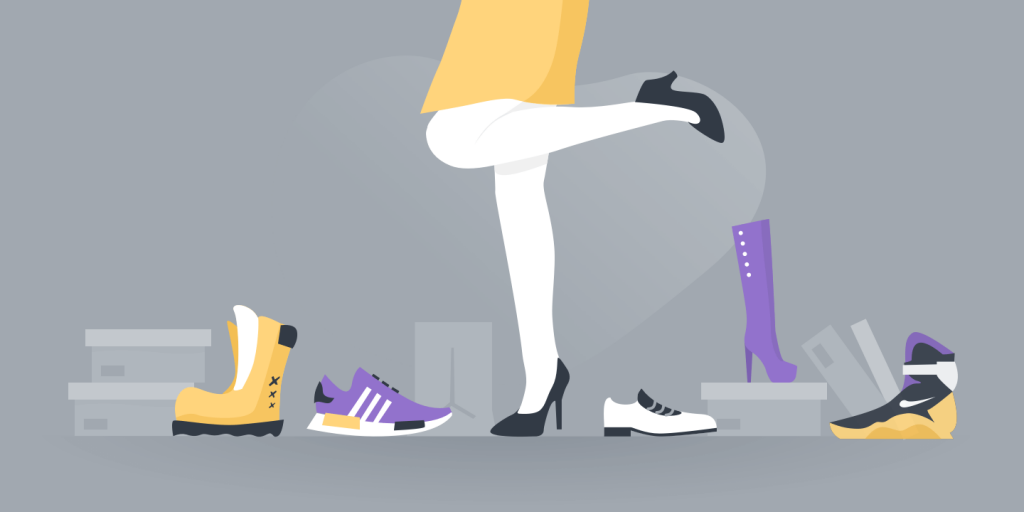78% of consumers say they’ll do business with a company after making a mistake if the customer service is excellent.
I have officially been a licensed driver for almost half my life. By this point, I don’t actively think about much while on the road— it’s all second nature at this point. However, driving on autopilot can sometimes cause you to miss some obvious signs.
Much like driving, despite your experience or comfort levels, if you put your customer experience processes on autopilot, you might miss a few critical bits of directional information. And if you’re a newer driver, you might not know which lights on the dash need urgent attention and which ones are everyday maintenance issues.
Think of this as your CX dashboard. If you’re not sure whether you need to investigate CX, here are four signs that you may need to embark on a CX improvement program.
 Low CSAT Scores and High Churn
Low CSAT Scores and High Churn
We’re sure you’ve heard the phrase, “don’t focus on the destination, focus on the journey,” and although it is a bit corny, this advice holds true when dealing with customer satisfaction. Often, after a deal closes and the customer is onboarded, sales and marketing teams may unconsciously start ignoring incoming customers as they need to move on to the next prospect. Then, when chances to renew or upsell come along, customers aren’t interested because they feel like you haven’t delivered on your promises.
Although growth and customer acquisition goals have been met, you’ve taken two steps back by not consistently keeping an eye on the quality of each customer journey.
So, what can you do? Start with asking the people who are leaving, “why?” By documenting complaints through surveys, your team can begin to discover patterns. If you start losing long-term customers, it’s a sign that your customer experience strategy is no longer working and needs to be updated.
Bottom line: If your business receives complaints about the quality of your customer service, it’s a good sign you need to rethink your strategy. That doesn’t mean you have to be perfect either; no business can manage to keep all their customers happy all the time. 78% of consumers say they’ll do business with a company after making a mistake if the customer service is excellent. But keep your eyes peeled. If it’s been a suspiciously long time since you’ve received any complaints, it might be that you aren’t giving your customers the platform to air their issues or that the platform you’re using is too hard to use. Like the destination metaphor, as much as complaints seem like speed bumps to avoid, try to see them as a positive and use them to improve as you grow.
 Low Conversion Rates
Low Conversion Rates
Conversion rate is the number of conversions divided by the total number of visitors. For example, if an e-commerce site receives 200 visitors in a month and has 50 sales, the conversion rate would be 50 divided by 200, or 25%. Therefore, a conversion can refer to any desired action that you want the user to take. Conversion rates are usually one of the primary metrics that businesses use to measure success.
Raising your conversion rate means that more of your site traffic converts to meaningful actions that grow your business, like filling out a form to become a lead or making a purchase. Companies invest a lot to increase their conversion rates. However, they often underestimate how UX design influences this vital metric.
A low conversion rate could point to either of these problems:
- Your site and landing page design is making it difficult or inefficient to complete tasks
- Your offer is off base (too expensive or not valuable enough to your audience)
An excellent place to start is having a clear definition of your audience and the goals you need to accomplish to satisfy the said audience. Simply following the latest design trends on your site won’t get you very far but following your customers’ goals will.
HubSpot found that 68% of consumers say they are willing to pay more for products and services from a brand known to offer good customer service experiences.
After defining who you’re targeting, you’ll want to make sure your CTA (call to action) is appropriate. Think of a CTA like signaling in your car. You want to make sure the intended understands what to do once you hit that signal. If all your formatting, copy, images, video, and context create a dim CTA— you end up with many fender benders— and a lot of possible churn.
 High Cost per Contact
High Cost per Contact
In its simplest form, CPC (cost per contact) is the total cost of operating the service desk divided by the number of calls or interactions it handles during a given time frame. That period can be whatever is most beneficial to you: a week, a month, a quarter, or a year—as with any statistic, measuring too short of a period permits the possibility of outliers to skew the measurement.
A high CPC indicates that your customer service operations are not operating efficiently. Essentially, if your cost per contact is high, it means that it’s taking you too long to solve a problem, which can again lead to high churn from frustrated customers. If you notice your CPC creeping higher, consider finding ways to divert customers to more efficient channels (ie. self-service over email, or chat instead of phone).
However, note that cost isn’t everything when it comes to CX – you also need to balance the quality of the customer service with the cost. Rather than a “stop driving right now” warning light, a high CPC is more of a “you should look at this” warning light.
 High Customer Contact Ratio
High Customer Contact Ratio
Like a CPC, having a high-contact service means you offer a lot of handholding to your customers through direct support.
Comparatively, a low-contact service means you give them tools to sort things out for themselves. It requires balance to provide great service. While no one likes to be talked down to by a mechanic, no one wants to be thrown into the garage on their own either. 28% of consumers say the most frustrating CX issue is information that is simple but hard to find.
The customer contact ratio is measured by taking the number of customer inquiries through your ticketing and phone system in a given period and dividing that number by the number of paid orders during that time. For example, if you have seven customer contacts and 100 orders in a month, your contact rate is 7. If you’re receiving more questions than orders— something is wrong.
Without sacrificing customer experience, the best way for a company to approach this issue is to enable departments to collaborate around the customer on one single solution. Many of your customers don’t have the time to resolve their problems with a phone call, and other customers don’t want to wait for an email reply that may take up to 24 hours to get. These customers need an immediate resolution to a relatively simple challenge, and for them, self-service options work best. Practical self-service tools provide the added benefit of freeing up your customer service agents to handle more complex inquiries.
 Attention, granted
Attention, granted
There is no doubt 2021 will have a new set of challenges. We’re not out of the woods yet in terms of the pandemic, and it’ll likely impact customer trends for a while. Take this opportunity to learn about those lights on the dash. Not all warning signs will be glaring, but companies that are agile and equip themselves with the right solutions to keep up with changes as they happen are most likely to emerge as leaders.









